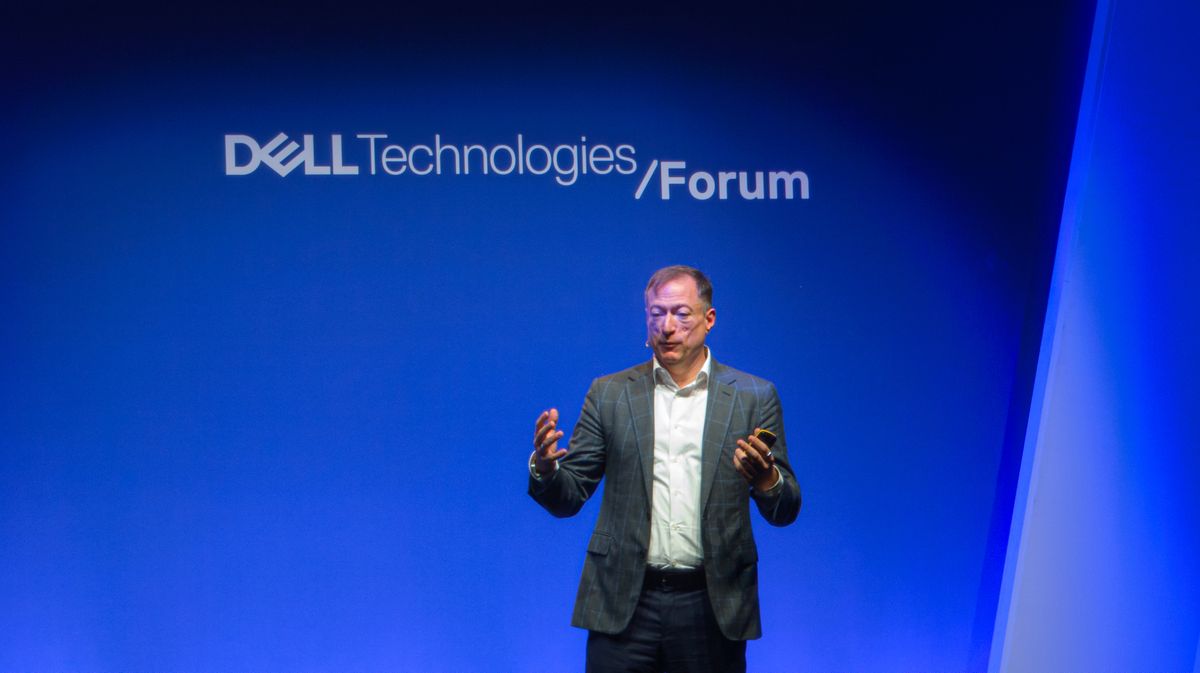Dell Technologies CTO: ROI on AI should be the number one focus for execs

Business leaders need to focus more on the return on investment (ROI) from AI projects, prioritizing those with definable value, according to John Roese, Global CTO at Dell Technologies.
In conversation with ITPro at Dell Technologies Forum London 2024, Roese argued that there’s immense potential for AI and generative AI in the enterprise but that customers still struggle with identifying the best route to adopting and using the technology to unlock revenue returns.
In the past year and a half, Dell Technologies narrowed down its AI projects from a potential 800 to 360, then again down to four key areas that could benefit most from AI transformation. These are global supply chain, global services, global sales, and global engineering.
“If any of those four get better in a material way, I win,” Roese stated in his opening keynote speech, emphasizing the importance of measurable success in these early years of enterprise AI.
In the past 12 weeks, Roese has also taken on the role of chief AI officer (CAIO) at Dell Technologies and has overseen a rethink of how the company approaches AI decision-making.
“The very first thing we evaluate before anything else, before technical or security, is ROI,” said Roese.
“And now the process in Dell is if you have a great idea and you want us to evaluate it as potentially something we’re going to do, the very first question is show us the ROI.
This pragmatic approach to AI investment is already seeing returns. Its new AI coding assistant has been rolled out to 20,000 engineers, raising productivity and lowering the barrier to entry for new engineers.
One of the keys to achieving these gains has been establishing a top-down approach to AI investment decisions, instead of Dell’s former model of seeking company-wide input on its AI priorities.
“This is not consensus building; our first go-around we tried to do that by the way, we tried to get consensus and it went nowhere.
“It’s not the fault of anybody – if you take 15 business leaders, bring them into a meeting and say they’re going to collectively decide on which project they should prioritize of the 15 projects they all want, guess which one they all vote for? They vote for their own and that’s what we pay them to do.”
Getting the wheel turning
Roese returned to the image of a flywheel repeatedly throughout both his keynote speech and in conversation with ITPro, a visual metaphor he used to represent the importance of starting with projects that generate money to generate AI inertia, which allows you to do more down the line.
“Some things slow the flywheel down, like an HR project, some things speed it up like a services project. The key is, if it’s not moving at all, throwing a whole bunch of things that slow it down is not going to make it move.”
At Dell, this has meant embracing the most transformational AI projects first to demonstrate massive savings or supercharge productivity. Roese stressed that only the most important projects will generate returns of this kind.
“[We} still see companies even consultants and people talk about ‘Your first project should be really easy and non-controversial. Why? Well okay, so you do it, what you learned is AI is important – I could have told you that without the project, that doesn’t help you.”
That doesn’t mean businesses need to tackle the hardest problems first, he added, noting that Dell has stayed away from integrating AI in highly regulated environments. But in other areas such as automating code generation with AI, there are fewer regulatory barriers to getting a project off the ground.
Even so, Roese noted that companies can have a clear focus on what they want to achieve with AI – such as code generation – but struggle with the exact path to making that a reality. For example, a firm might choose GitHub Copilot as an AI pair programming solution for ease of access and low up-front investment cost, but this can come with its own downsides.
“Okay, you going to put all your source code in a public environment essentially, you’re going to use a SaaS service that has weird economics and, quite frankly, might in fact jeopardize the privacy and confidentiality of your code long-term.
“Maybe it will, maybe it won’t, but you can’t guarantee it. And by the way, if it eats all of your code and destroys it, the indemnification is they give you the money you paid them back. Your business is gone and you get a rebate – that’s what SaaS is about, that’s what cloud is about, people should go in there with their eyes open.”
None of this means the public cloud is a definitively bad option for AI adoption – but Roese warned that all of these risks would have to be taken into account and insured for by a business looking to go down this route.
Roese explained that Dell assessed GitHub Copilot and couldn’t agree to its economic model, nor did it believe the tool aligned with its values as a company, so it went with a solution called Codeium which it now runs on-premises.
This took longer to choose than implement because of a phenomenon Roese called “shiny object syndrome” – the propensity for IT teams to always be tempted by the next best product in the market rather than settling on one and getting on with the project.
Just prior to Dell beginning to implement Codeium, Meta released Code Llama, which tempted some on Roese’s team. This was another instance of the top-down approach, as he and other leaders at the firm put their foot down and vetoed chasing the newer model.
“The only bad AI project is one that doesn’t get implemented because you’ll never get ROI if you’re not in production,” he told ITPro, comparing AI models to buying a new car in full knowledge that once it’s off the lot it’s no longer state of the art but that this doesn’t mean you don’t buy one at all.
“What matters is: does that tool create a platform to solve your problem, to unlock the ROI that you have chased? If those conditions are true, ignore the shiny objects and just put it into production and go.”
Source link











